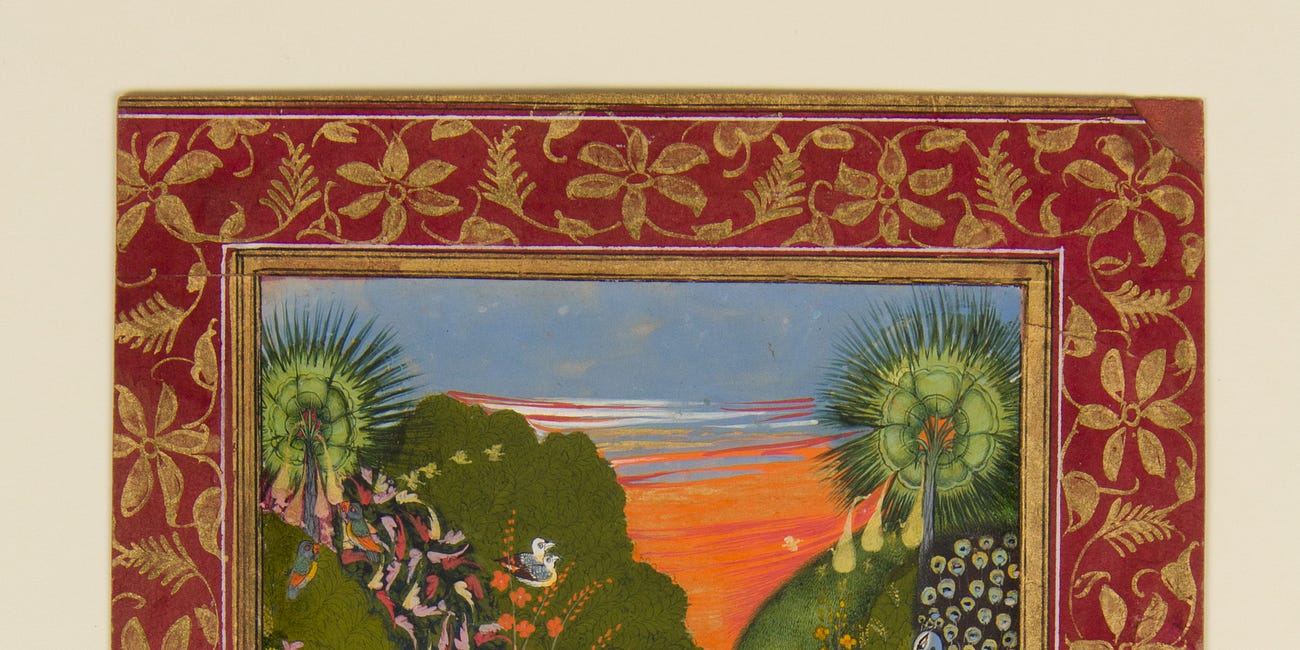Understanding Raag Charukeshi
Charukeshi is melodious, romantic, and at times poignant. Here's a beautiful composition in the raag explained with western sheet music.
Charukeshi is a Raag that originated in the Carnatic Classical ecosystem and recently moved to the Hindustani system. I hope this post helps it move to a third system - Western music.
Composition
This is the composition we’re going to break down today. The lyrics are from Mira Bai, a 15th-century female poet, and saint, famous for her devotion to Lord Krishna. The artist is Smt Sawani Shinde singing a composition by her grandmother, a renowned Hindustani classical singer in India.
It’s a 4 line song, and the English transliterated lyrics (in italics) are annotated with the swaras/notes ( Swaras to Piano notes reference for western music is here).
— Chorus —
GR G Md PPP PdndPMGMRS
Saavaraa nanda naaandana
PdnSd PdMPGMRS
DeeTha paDyaa maeriii
— Verse —
(M)PdS.... nSRS d...P
Kesararee tilakaa bhaala
PdR'Sn d..P...G MRS
lochan sukha daayiii
Sheet Music
Prateeksha’s niece Anisha helped transcribe this piece into sheet music (in the pitch/tonic of A). Wind and fretless instruments can easily emulate the Meends (glides) between notes with a little effort. For the rest, pianists, guitars, and the like - you can still play the composition, understand the music and hopefully use elements from the raag in your improvisations. (e.g. here’s a piano piece in Charukeshi by Utsav Lal).
Here’s Anisha playing the composition on the violin (Indo-western style).
Musicians - please upload your version of this song and share it with me in the comments.
Structure of the Raag
The Raag is fairly straightforward. It uses all 7 notes, and assuming your tonic/pitch is C, the first half of the scale is all major notes, but the 6th and 7th are flat. Remember this, if the tonic (root note / pitch) is C, then notes of Charukeshi form the G Melodic minor scale.
Apostrophe (e.g. R’) after a note indicates notes in the upper octave, and before a note (e.g. ‘n) represents notes in the lower octave.
The structure of the Raag (Reference chart for western musicians here)
S R G M P d n S’ (M being Major)
S’ nS’R’S’nS’ ~ d P .. d P M G R ‘n ‘d S
Chalan (movement)
Hindustani classical music is characterized by “Meends” - glides from one note to another. Some combinations of these Meends are unique to a Raag and determine the song's mood. Common Raags are easily identifiable to the trained ear. In the rendition above, you can notice the most Meends when the musician moves between notes in the Raag or when they jump notes in the scale (e.g. S’ ~ d).
Some of the key phrases in the Raag are
R G M P M M~G R
R G M d … d n d P
P d S’… n S’ R’ S’ d n~d P
d P M G .. R G M R S
Mood of the raag
Technically, Charukeshi comes from the Carnatic music system, but in the Hindustani system, its Ras (“flavor”) is said to be that of romance/love. Composers have used it in a devotional context, often the subject expressing love for God (e.g Mira bhajans).
To me, Charukeshi is a wonderful template to convey happiness and sadness in a single musical motif. The Raag’s unique construction naturally lends itself to this emotional swing; all Major notes are in the bottom half of the octave and only flat notes in the second. Komal Dha (flat 6th) adds an uneasy amount of tension that needs to be quickly resolved by gravitating towards Ma(4th) or Sa(tonic). Komal Ni (flat 7th) is used to decorate nearby notes and add more tension.
More Charukeshi songs and compositions
Parrikarji catalogs this composition from Russian composer Mikhail Ippolitov-Ivanov - “Procession of Sardaar” to be in Raag Charukeshi. While reading more about this composition, I discovered an Armenian song inspired by the same composition, titled “Zeituntsiner”
Closer to home, Bollywood has many blockbuster songs in this Raag. Some notable ones
Bedardi Balma tujhko - by Lata Mangeshkar
Baiyyan naa dharo o balma - by Lata Mangeshkar
Shaam teri bansi pukaare radha shaam - Aarti Mukherjee
Akele hain chale aaon - Mohd Rafi
Kisi Rah mein kisi mod par - Mukesh and Lataji
Udaya Udaya - Sadhana Sargam & Hariharan
Here’s a YouTube playlist with more Hindustani classical songs in Raag Charukeshi. Some of the famous classical pieces include
Laaj rakho tum mori - by Ustad Amir Khan
To end this post, I quote Ranjanji again describing Charukeshi. Thank you for reading 🙏🏾🙂
A serious comparative study of the treatment of common congruent scales in the Hindustani and Carnatic systems is desirable and remains to be done. The very few attempts hitherto, when they have not been undertaken by the thoroughly incompetent, have been at the mercy of the unremarkable.
Check out more stories about Raag Kirvani / Keerwani & my favorite Saarang
Understanding Raag Kirwani
Kirwani is officially the 21st Melakartha ragam in the Carnatic music system and also made its way into the Hindustani music system in recent years. It’s a complete Raag - meaning it uses all 7 notes with Komal Ga and Komal Dha and the rest being Shuddha swaras.
A quick intro to Raag Brindavani Saarang
Around the popular figure gathers many a legend that obscures history, if any … and what is History but legend agreed upon? Krishna is a mystical figure in Indian literature. One that has inspired several books, compositions, and movies. He’s depicted as a polyg…




